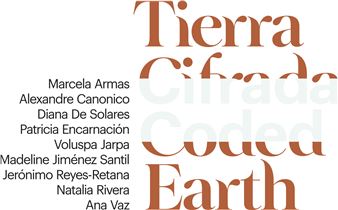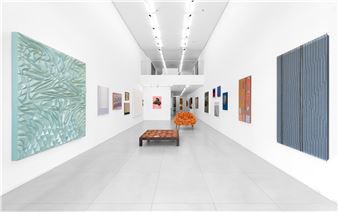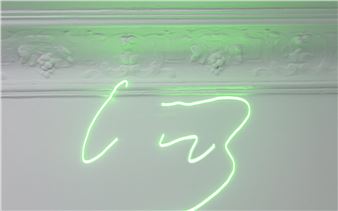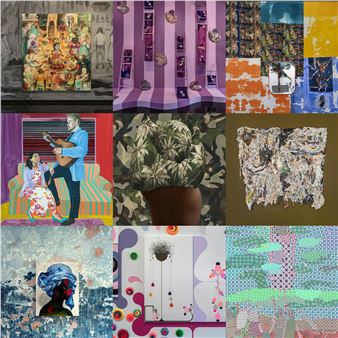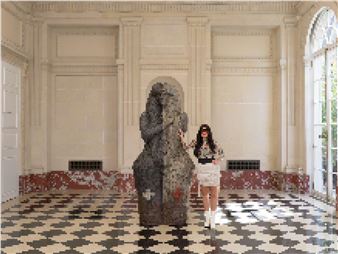Figure it Out: LucГӯa Vidales Selects
This exhibition opens a dialogue between HambreвҖ”an ephemeral charcoal mural-drawing commissioned for the MuseumвҖҷs ninth annual installation of the Atrium Project (2024вҖ“25)вҖ”and the Kemper MuseumвҖҷs Collection. The salon-style format invites playful and open-ended readings of selected works from 1935 to 2023вҖ”including drawings, photographs, paintings, prints, and collages by artists from multiple geographies. These works maintain a connection between painting and drawing, as seen in the original mural, with the goal of generating new interpretations of both the Collection and the mural.
These works explore the figureвҖҷs relationship to the frame and the picture plane, the figure-ground relationship, and the figureВҙs interactionsвҖ”intersecting, overlapping, contouring, hiding, contrasting, or using negative spaceвҖ”as ways to express subjectivity, identity, desire, or social and political dimensions. As a painter, I find in the photographs, drawings, and paintings a shared approach to making a figure, by composing, recognizing, constructing, playing, or by figuring things out in the process of artmaking.
The exhibition unfolds in two rotations. The first focuses on figures (human and non-human) as individual or group portraits at rest, contemplation, in isolation or in moments of intimacyвҖ”evoking vulnerability or entitlement. The second shows bodies in flux: realities of migration and tensions with surrounding contexts.
Traditional Western art historical canon has long used the figure to reinforce inequality. Today, thinking about the figure, as simple as it might sound, is both fascinating and problematic: a yet open field of possibilities. From realistic, caricatures, or animatedвҖ”with their representations of class, gender and identity, the alienated or wild, as well as prejudices of American popular cultureвҖ”these figures call us to question, resist, and imagine.
Some figures belong to fictional realms, serve as documents of their time, or inhabit both. Certainly, none have fixed meaning. Figures appear not only as representations, but as gestures, processes, or marks, as a form of presence. Figuring out, appearing, and emerging to our own gaze through contrast or camouflage. They become silhouettes or opaque fields, waiting, seeking where to belong and coming into focus. Figures claim a place and look back at us. - LucГӯa Vidales, Monterrey, Mexico, 2025
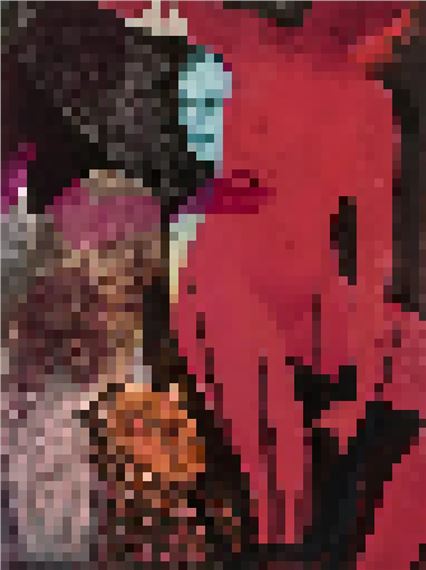
Recommended for you
This exhibition opens a dialogue between HambreвҖ”an ephemeral charcoal mural-drawing commissioned for the MuseumвҖҷs ninth annual installation of the Atrium Project (2024вҖ“25)вҖ”and the Kemper MuseumвҖҷs Collection. The salon-style format invites playful and open-ended readings of selected works from 1935 to 2023вҖ”including drawings, photographs, paintings, prints, and collages by artists from multiple geographies. These works maintain a connection between painting and drawing, as seen in the original mural, with the goal of generating new interpretations of both the Collection and the mural.
These works explore the figureвҖҷs relationship to the frame and the picture plane, the figure-ground relationship, and the figureВҙs interactionsвҖ”intersecting, overlapping, contouring, hiding, contrasting, or using negative spaceвҖ”as ways to express subjectivity, identity, desire, or social and political dimensions. As a painter, I find in the photographs, drawings, and paintings a shared approach to making a figure, by composing, recognizing, constructing, playing, or by figuring things out in the process of artmaking.
The exhibition unfolds in two rotations. The first focuses on figures (human and non-human) as individual or group portraits at rest, contemplation, in isolation or in moments of intimacyвҖ”evoking vulnerability or entitlement. The second shows bodies in flux: realities of migration and tensions with surrounding contexts.
Traditional Western art historical canon has long used the figure to reinforce inequality. Today, thinking about the figure, as simple as it might sound, is both fascinating and problematic: a yet open field of possibilities. From realistic, caricatures, or animatedвҖ”with their representations of class, gender and identity, the alienated or wild, as well as prejudices of American popular cultureвҖ”these figures call us to question, resist, and imagine.
Some figures belong to fictional realms, serve as documents of their time, or inhabit both. Certainly, none have fixed meaning. Figures appear not only as representations, but as gestures, processes, or marks, as a form of presence. Figuring out, appearing, and emerging to our own gaze through contrast or camouflage. They become silhouettes or opaque fields, waiting, seeking where to belong and coming into focus. Figures claim a place and look back at us. - LucГӯa Vidales, Monterrey, Mexico, 2025
Artists on show
Contact details


 ARTISTS
ARTISTS








